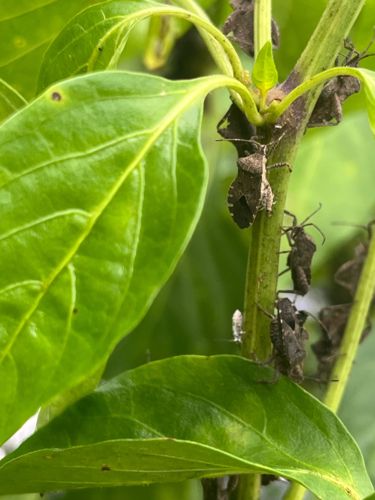Brown Marmorated Stink Bug
Scientific Name: Halyomorpha halys
Order & Family: Order: Hemiptera, Family: Pentatomidae
Size: Adults typically range from 12 to 17 mm (0.5 to 0.7 inches) in length.

Natural Habitat
Originally from East Asia (China, Japan, Korea, Taiwan), the Brown Marmorated Stink Bug has become an invasive species in North America and Europe. They are commonly found in agricultural fields, orchards, gardens, and wooded areas. In colder months, they often seek shelter in human structures, such as homes and barns, to overwinter.
Diet & Feeding
The Brown Marmorated Stink Bug is highly polyphagous, feeding on a wide range of host plants including agricultural crops like fruits (e.g., apples, peaches, corn, soybeans), vegetables (e.g., tomatoes, peppers), and ornamental plants. They feed by inserting their proboscis into the plant tissue and sucking out sap, which can cause significant damage to fruits and vegetables, leading to dimpling, necrosis, and reduced marketability.
Behavior Patterns
True to their name, stink bugs emit a foul odor when threatened or crushed. They are known to aggregate on buildings in the fall, seeking shelter for overwintering, and can become a nuisance pest indoors. They are generally slow-moving. Nymphs and adults feed throughout the day on host plants.
Risks & Benefits
Potential risks include significant economic damage to agricultural crops, making them a major pest for farmers. Their tendency to aggregate indoors in large numbers can also be a nuisance to homeowners. They are not known to pose direct health risks to humans beyond the foul smell. There are no known direct benefits of this invasive species.
Identified on: 9/1/2025